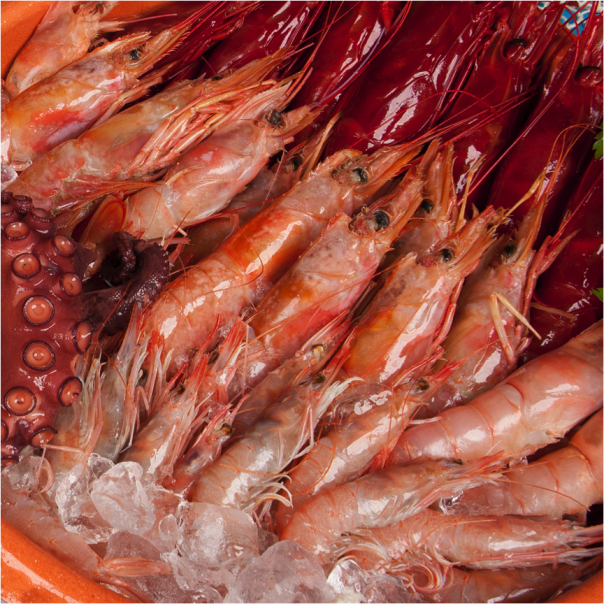
Sustainability and health credentials continue to influence the growth of fish and seafood uptake out-of-home. According to Seafish, total annual seafood purchases in Britain are estimated to be worth £6.24 billion, up 1.3% on the previous year, while in the foodservice sector, diners purchased seafood worth an estimated £3.11 billion.
Industry leaders are right behind sustainability; the Compass Group, for example, has just joined the Sustainable Seafood Coalition, a partnership of UK businesses working to ensure a healthy and sustainable future for our oceans.
Meanwhile, the Marine Stewardship Council (MSC) confirms that newly certified fisheries have made Cornish hake, redfish, saithe, whiting and mackerel available through certified suppliers, but it says the most exciting news is that North Sea cod has gained MSC certification.
“MSC certification for cost sector caterers enables them to add the blue ecolabel to their menus,” comments MSC UK senior commercial manager George Clark. “This can boost sales and customer loyalty, but also helps ensure there will be fish in our oceans for generations to come.”
The MSC cites national foodservice supplier Thomas Ridley recently gaining certification, meaning it can supply MSC-certified pollock, cod, salmon, hake, haddock and prawns, as well as MSC canned tuna.
“Having MSC certification highlights our reputation as a responsible business and gives added reassurance to our customers about our products,” says Thomas Ridley’s procurement supply manager Laura Buthlay. “Many of our contracts, especially in education, demand MSC seafood.”
The MSC says product development is catering for trends such as free-from. For instance, Crown Foods and Brakes have linked up to offer MSC gluten-free bubble fish. Available in MSC wild Alaska pollock or salmon, the fillets are coated in a gluten-free rice crispy crunch.
Trend-wise, Brakes category manager Andrew Crawford sees ‘raw’ as a growth area with carpaccio, tartare and ceviche regularly featuring on menus. “Another fast-emerging ‘raw’ trend is poke – marinated uncooked tuna/salmon tartare,” he says, adding that people perceive such products as healthier.
Scampi is another area of growth, which is attributed to a ‘love of retro’, such as memories of ‘scampi in a basket’ among the older generation, albeit modern presentations are now more common. According to Crawford, servings were up by approximately 6% year-on-year in Q2 2016.
Young’s foodservice director Adrian Greaves says its range meets all caterers’ needs, from MSC omega-3 fish fingers for gourmet sandwiches or children’s menus, to its fish pie mix being ideal for pies, pasta bakes or Mexican tacos.
Highlighting the importance for caterers to be aware of sourcing, he says: “Through our Fish for Life Corporate Social Responsibility Programme we improve the impact of everything we do from sea to plate. Sustainable practices are the only way to safeguard the future of fish. This is why we support the MSC and work with fishermen and others to improve long-term sustainability.”
Jason Calcutt, business development chef at M&J Seafood, says that sustainably caught British fish may not always be the cheapest option but, given the trend towards premiumisation, people will pay more for something of high quality with provenance.
“Although locally sourced seafood such as Dover sole and lobster might be more expensive, they can be used with cheaper alternatives like megrim and plaice to create cost-effective dishes,” he advises. “Strongly flavoured species such as herrings, sprats and mackerel make great wrap fillings where a small amount goes a long way, while cheaper brown crab meat makes a great sauce when blitzed with mayo, tomato and herbs and added to risotto or pasta.”
He highlights the influence of the high street on children, who are now keener on spicier food. “We’ve been working with schools on menu ideas such as spicy sprat fillets in wraps,” he says, adding that an Indian take on fish and chips involved a light coriander batter for the fish and a side of Bombay fries created by a sprinkling of garam masala. Another was spicy battered coley served with Bombay fries and a pea and mint raita.
Beacon Purchasing says that, according to data from the Technomic Menu Monitor, the fastest-growing seafood dish during 2016 was mussels with growth of 68.8%. Others displaying growth are squid and octopus (45.5%), seafood ravioli (40%), yellowtail and hamachi sushi (33.3%) and tuna (30.8%). Beacon says the popularity of octopus can be attributed to the growth in Japanese cuisine, while the growth of tapas-style eating benefits from seafood such as prawns and squid, which work well for small plates.
Spanish wholesaler Mevalco says it is seeing changing trends that could reflect a more balanced approach to fish stocks because of the demand from operators for more unusual options – for instance, salt-cured air-dried tuna loin fillet, which is traditionally served thinly sliced with tomatoes, olive oil, almonds or grated egg.
“When it comes to salted fish, salt cod is increasing in popularity,” explains managing director David Menendez. “Because of the complexity of flavour and texture that occurs during the salting process, it has a chewier texture, milder almost sweet flavour, yet still a umami fishy taste, and there are benefits for operators as it has a longer shelf life.
“For those looking for the unusual, quirky products include plankton, dog fish and squid ink jars. Plankton brings the pure essence of the sea to cooking in a natural way. Once hydrated, it becomes a paste and can be added to sauces, stocks and soups.”